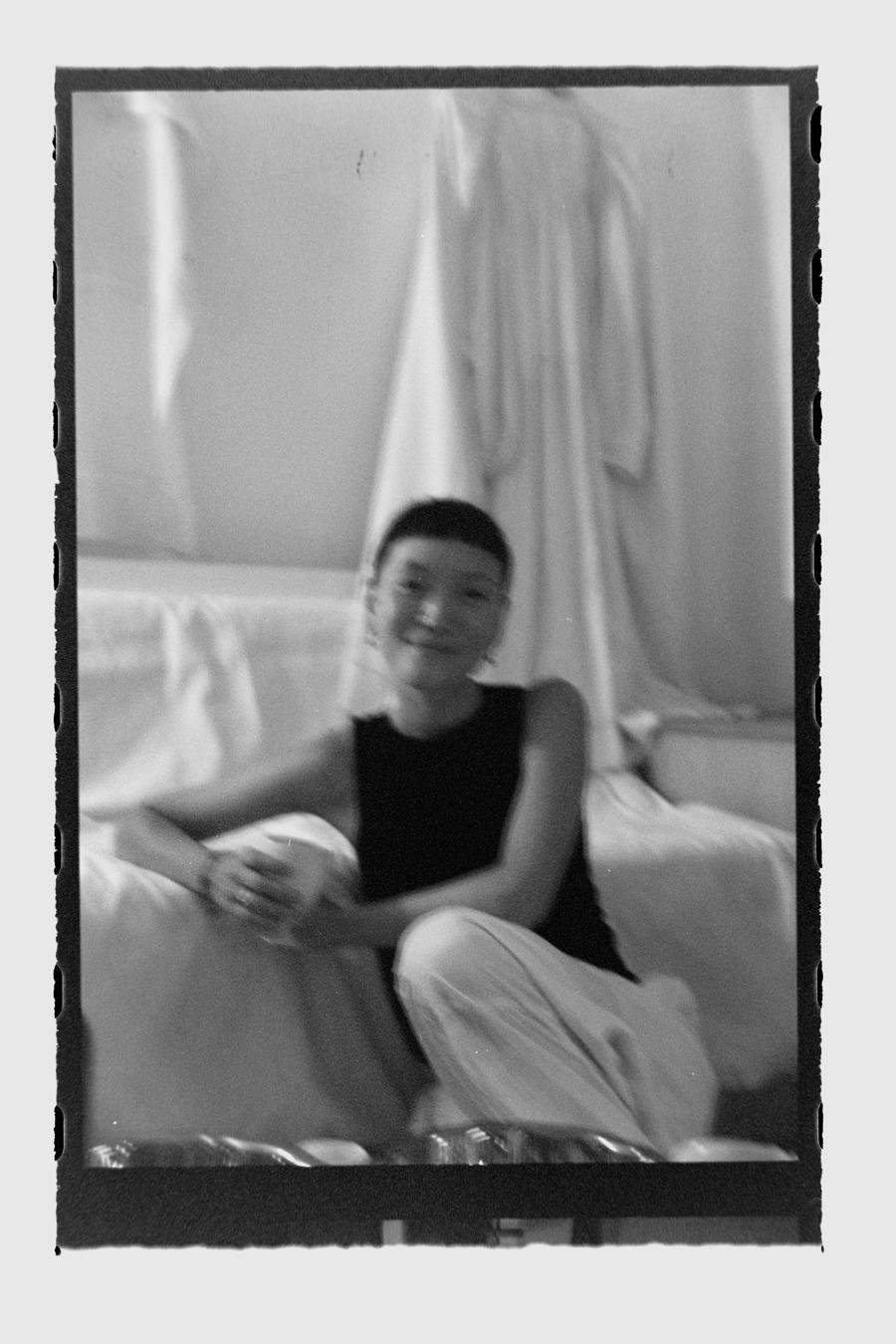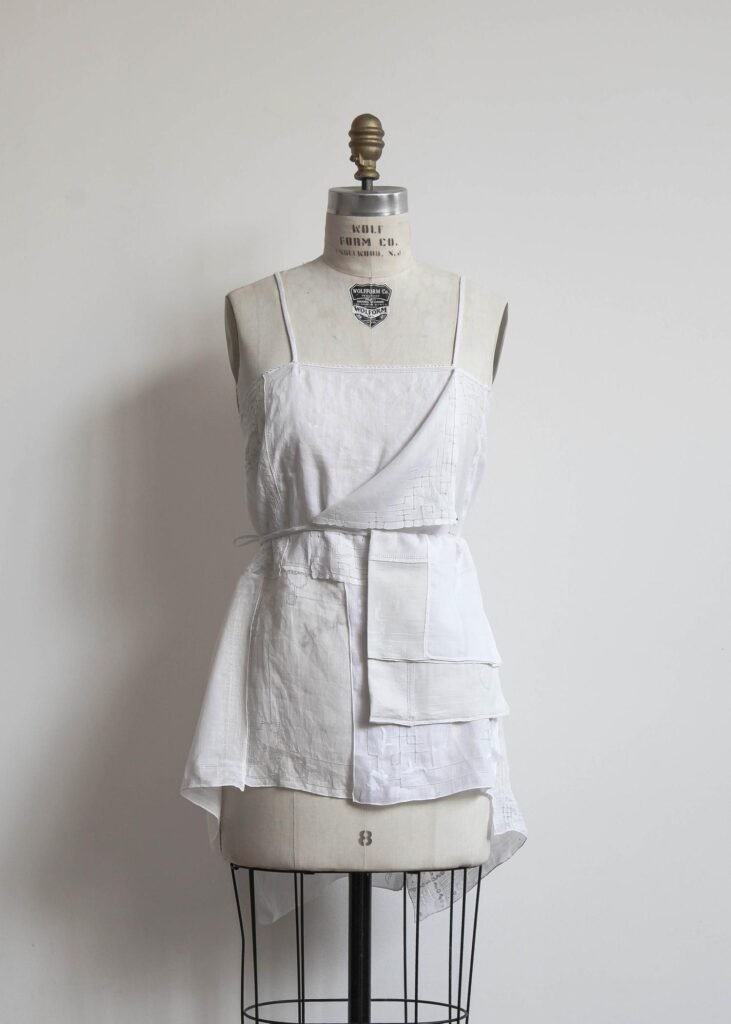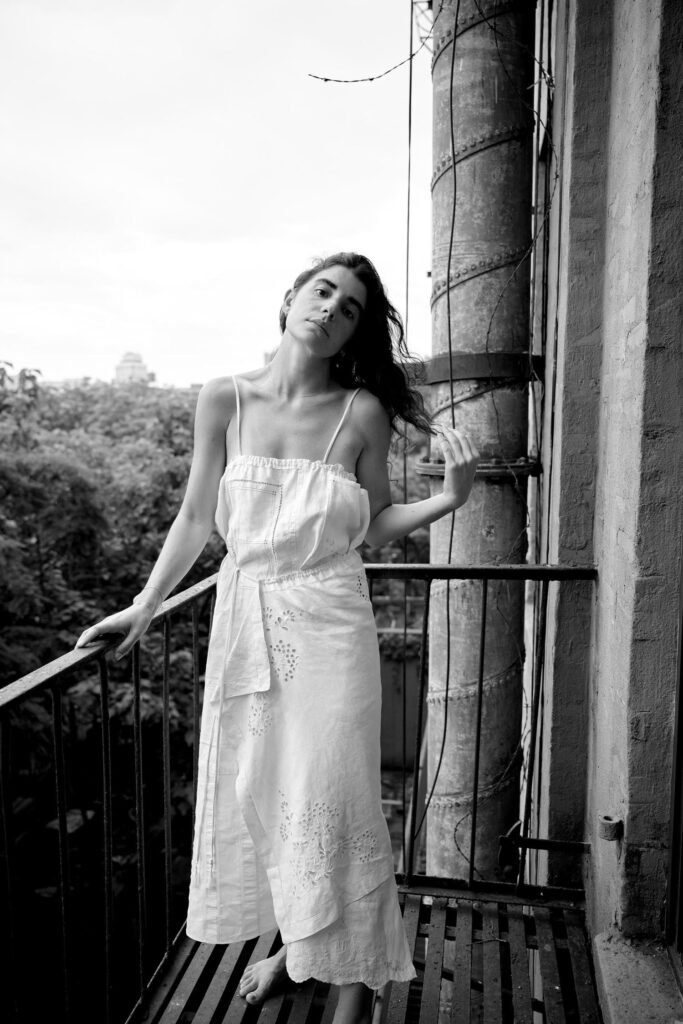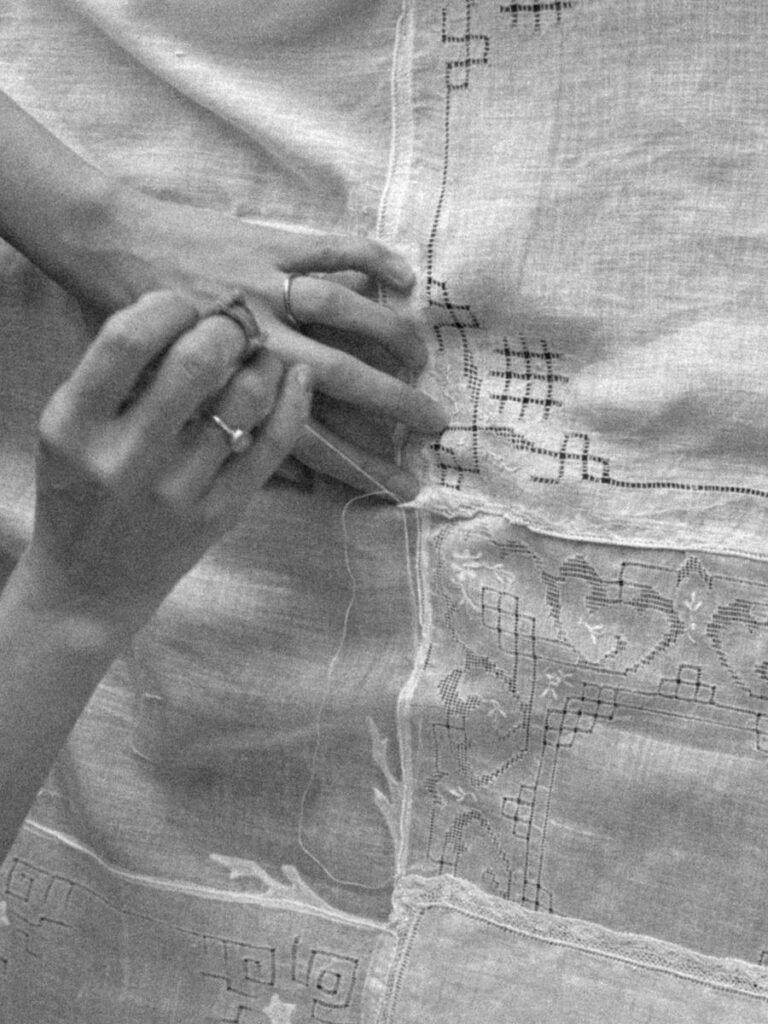A Conversation With Something in the Air ( S.i.t.a)
Something in the air (s.i.t.a), formerly known as Shichu, was founded in 2017 and officially registered in 2018.
It is a slow-making project rooted in the transformation of antique and vintage textiles into garments and objects with renewed life.
Based in a small mountain studio in Taipei, s.i.t.a centers on slow, handmade processes: sewing, repairing, dyeing, and ceramic work,to create one-of-a-kind pieces shaped by time, memory, and care.



“I often feel like a translator or quiet collaborator when working with antique textiles.
There’s deep respect for the original makers and the time their hands held these materials.”

THE CURALIST: Thank you for taking the time to answer few of my questions. To begin simply: who are you, and what do you do?
SHICHU (LEA): My name is Shichu Chi (my close friends and family also call me Lea). I’m the designer and maker behind something in the air (s.i.t.a), a project centered around hand-making garments from antique and vintage textiles. I work mostly alone — cleaning, repairing, designing, sewing, and making ceramic buttons and charms by hand in my studio, now based in the mountains of Taipei. Some parts of the process — like sourcing and natural dyeing — I often share with my wife and creative partner, Faline.
THE CURALIST: You chose to name your brand Something in the Air. Can you share what that name means to you, and how it connects to your philosophy?
SHICHU (LEA): The brand originally carried my name, shichuchi, but over time I realized it was hard for people to remember — and it didn’t quite reflect the spirit of the work. I wanted something more open, light, and connected to the feeling I get when I’m in a creative flow. The name something in the air came up spontaneously during a dinner with close friends, and it felt right — light, but full of movement.
THE CURALIST: How did the project of s.i.t.a begin? Could you share the story behind its origins?
SHICHU (LEA): I started my own label in 2018 under the name shichuchi, making RTW pieces with handwork details — but it wasn’t hands-on enough for me. During the COVID lockdown in NYC, I felt a strong pull to go deeper — to combine my love for collecting and restoring antique textiles with my desire to make wearable, handmade pieces. I began designing with minimal cuts and hand-stitch techniques to honor the original makers of the fabric — and the first apron dress came to life. s.i.t.a slowly grew from there.
THE CURALIST: I’ve noticed you work with vintage and antique textiles, often sourced from Europe and US. How do you choose what to work with, and what weight does provenance carry in your work?
SHICHU (LEA): In the beginning, most fabrics came from the U.S. — flea markets locally and while traveling. But after a 2022 trip to Barcelona, I became drawn to antique European lace and linens. Now we travel regularly to France, especially the northeast and central regions, to source. I choose fabrics that speak to me — through texture, pattern, or the quiet signs of age. I try not to cut into them too much, so each piece ends up shaped by the fabric’s original form and story. I think I explore textiles based on feeling. Provenance matters, but for me, it’s more about what the fabric holds — the touch, the emotion, the hidden history.

THE CURALIST: You often speak of the feeling of “collaborating with the hands of the past.” Do you see yourself more as a translator, a restorer, or a continuation of those original makers?
SHICHU (LEA): I often feel like a translator or quiet collaborator when working with antique textiles. There’s deep respect for the original makers and the time their hands held these materials. But with the relearning series, I’m also exploring what it means to be an original maker again. It’s a small shift — from preserving to responding. I’ve been working more intuitively: collaging with feelings, shaping with fragments and off-cuts, and letting imperfection guide the form. It’s called relearning because that’s what it feels like — working with the same essence, but leaving space for something more personal to emerge, even with materials already rich with history.
THE CURALIST: Your work blends technique, history, and art. How do you find balance between honoring the past and creating something contemporary?
SHICHU (LEA): For me, it’s about holding both at once — letting them speak to each other. I work with vintage and antique materials that are already full of stories, and I try to respond to them as a maker of today. Hopefully, by doing so, something contemporary and deeply personal can emerge.
THE CURALIST: Are there recurring themes, questions, or tensions that you keep returning to ?
SHICHU (LEA): Yes — two questions in particular. One is about identity. I was born in Taiwan, spent most of my adult life in New York, and find myself drawn to antique materials from Europe. I’m still learning what that all means — how to express the in-between space I often inhabit. Maybe that’s why I work in fragments. I don’t try to resolve it, but to hold it through the process. Another is around authorship. When I work with textiles already full of history and someone else’s labor, I wonder what it means to make something “original.” That tension — between caring for the past and allowing something of myself to emerge — is something I return to again and again.

THE CURALIST: Working from antique textiles means each piece is really singular and unique. How does this become a creative language of its own, a way of thinking, rather than just producing?
SHICHU (LEA): I’ve come to see the materials as collaborators — they set certain limits but also open unexpected paths. I often don’t know what a piece will become until I’ve spent time with the fabric. There’s a lot of listening involved. Each remnant or imperfection becomes a point of departure. It slows down the process and shifts it from a linear mode of production into something more cyclical, intuitive, and responsive. Because I get to make each piece differently, it also feeds my need to stay creatively alive. The work becomes less about producing and more about being in conversation — with the fabric, with memory, with my own hands. Over time, this way of working has shaped its own language — one that values feeling over formula and honors care, presence and intuition.
THE CURALIST: The ceramic buttons and hand-crafted tassels in your work feel like small art pieces themselves. Could you walk us through the process and philosophy behind making these details by hand ?
SHICHU (LEA): I’ve loved handicraft since I was little, and I’ve always made things myself. So it came naturally to hand-make these elements. Working by hand allows me to stay close to the piece at every stage. The ceramic buttons are shaped and fired in small batches, each one slightly different, and the tassels are knotted slowly. There’s something meditative about it. I see these handmade elements as points of care — little gestures that slow things down and invite touch and attention.
THE CURALIST: If you were to create a list of thing defining s.i.t.a, what would it be ? ( key materials, values, themes or routines)
SHICHU (LEA): Intension, intuition, care, resistance
THE CURALIST: Finally, how would you describe the time we’re living in through the lens of craft, care, and slowness? And how does it impact your work ?
SHICHU (LEA): We’re living in a high-speed world — everything feels seasonal, fast, and constantly shifting with trends. But that’s exactly why craft, slowness, and intention feel so urgent and necessary. I believe that when something is made with care and intention, the receiver can feel it. Through my work, I hope to invite a moment of stillness — a soft slowing down, where something quiet and peaceful can be felt.
INTERVIEWER
Alice Corolleur
BRAND
Something in the air (S.i.t.a)
PHOTOGRAPHY
Something in the air (S.i.t.a)
Ingmar Chen

